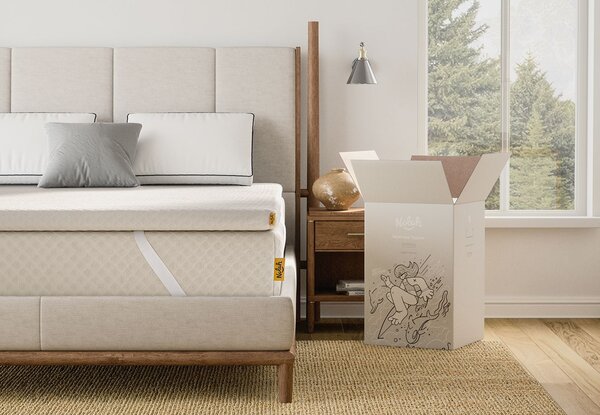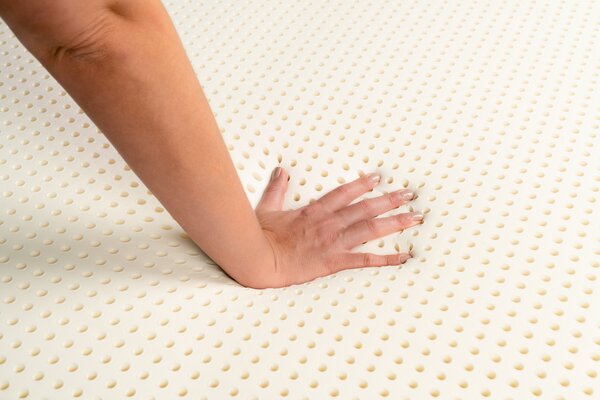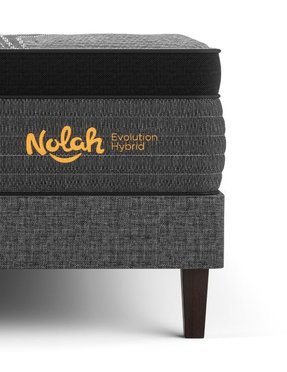Latex vs Memory Foam Toppers: Which Is Best For You?
Adding a mattress topper is a convenient and cost-effective way to level up the comfort and support of your bed. This extra layer can also extend the lifespan of your mattress, promoting quality sleep for years to come. But as with mattresses, there are countless mattress toppers to choose from, and finding your fit may seem overwhelming.
To help narrow your search, we’re comparing two of the most common mattress topper materials: latex and memory foam. This guide will cover the similarities and differences between latex and memory foam and help you determine which suits your sleep needs and your current mattress best.
What Is a Memory Foam Mattress Topper?
Adding a mattress topper is a convenient and cost-effective way to level up the comfort and support of your bed. This extra layer can also extend the lifespan of your mattress, promoting quality sleep for years to come. But as with mattresses, there are countless mattress toppers to choose from, and finding your fit may seem overwhelming.
To help narrow your search, we’re comparing two of the most common mattress topper materials: latex and memory foam. This guide will cover the similarities and differences between latex and memory foam and help you determine which suits your sleep needs and your current mattress best.
Pros of Memory Foam Toppers
Soothing Pressure Relief– A curve-hugging memory foam mattress topper can take tension off sensitive joints, redistributing it across the topper surface.
Excellent Motion Isolation– Due to its slow response, memory foam isolates motion well. This quality minimizes sleep disruptions for couples sharing a bed.
Cons of Memory Foam Toppers
Heat Retention– The chemicals that give memory foam its flexibility are heat-sensitive, so the foam often feels softer the longer you’re in bed, and it absorbs your body heat. It’s also known for trapping heat within, a common complaint among hot sleepers.
Sinkage– Memory foam’s heat sensitivity can also cause sinkage and the feeling of being “trapped” in the foam.
Nolah Mattress Topper

Made with the same technology as our premium AirFoam™️ mattresses, the Nolah Mattress Topper adds comfort and support to any mattress.
What Is a Latex Mattress Topper?
Latex mattress toppers are another cushioning foam option for adding pressure relief and support to your existing mattress. They’re known for their responsive bounce, balanced support, and impressive durability. You’ll find natural latex options (made with latex serum from rubber trees) as well as synthetic latex and blended alternatives.
Pros of Latex Toppers
Cooling Comfort– Latex foam has a highly breathable structure, letting refreshing airflow in and out. Natural latex is also temperature neutral, so it doesn’t trap heat or fluctuate in firmness like viscoelastic polyurethane foam.
Responsive Pressure Relief– Known for its “bouncy” feel, latex foam reacts instantly to your movements and gently contours to your curves. It provides premium pressure relief, ideal for sleepers with sensitive joints.
Maximum Durability– Latex foam toppers last for the long haul. The resilient foam resists indentations and sagging, remaining firm and supportive throughout its long lifespan.
Cons of Latex Toppers
Limited Motion Isolation– Due to its bouncy, responsive nature, latex mattress toppers don’t isolate motion as well as their memory foam counterparts. They dampen motion transfer to an extent, but you may feel some refraction of your partner’s movements.
Nolah Latex Mattress Topper

Our 3-inch Latex Mattress Topper is a soothing solution for sleepers who want extra pressure relief, responsiveness, or support from their bed. This durable topper uses cool and cushioning materials to enhance your mattress's feel while lengthening its lifespan. It also comes in three firmness levels for customized comfort.
Latex vs Memory Foam Mattress Topper Comparison
Latex and memory foam mattress toppers are similarly constructed with foam cores, so you may assume they share mostly the same characteristics. However, they’re two different products with distinct feels and comfort qualities. Below, we take a closer look at the features that set them apart.
Response & Feel
Winner: Personal Preference
While latex and memory foam both contour to your curves, the depth of their contouring and how quickly the foam responds differs significantly.
Memory foam is a slow-response material. When you add or remove pressure from memory foam, it takes time (about 6 to 10 seconds) for it to adapt. Memory foam also contours deeper than latex foam because of its heat-sensitive viscoelastic chemicals that react to your body's warmth, adding flexibility.
Latex, on the other hand, responds immediately to pressure or pressure removal. It also has a more buoyant feel than memory foam; you'll feel like floating on top of your mattress topper rather than sinking into it.
Temperature Regulation
Winner: Latex
When it comes to temperature regulation, latex foam has the clear advantage. Latex foam is more breathable than memory foam to begin with, and many latex toppers have a hole-punched foam design for even more air circulation.
As previously mentioned, viscoelastic polyurethane foam is a heat-sensitive material. It responds to your body’s warmth, hugging closer to your curves. Unfortunately, a side effect of this design is heat retention within the foam. Natural latex foam, on the other hand, is 100 percent temperature neutral.
Pressure Relief
Winner: Close Call
Memory foam and latex both excel at pressure relief. These cushioning materials redistribute your body weight, lessening tension around high-stress areas like the shoulders, hips, and spine.
Motion Isolation
Winner: Memory Foam
Because of viscoelastic polyurethane foam’s slow response, memory foam mattress toppers prevent motion transfer better than their latex foam counterparts. Due to the responsive, bouncy nature of latex, you may feel some disruption when your partner switches positions in their sleep.
Support
Winner: Latex
If your mattress lacks support and you want to bolster it with a more structured, firmer layer, we recommend a latex topper over memory foam. Adding a resilient latex foam layer that resists sinkage may help keep your spine aligned, preventing soreness and back pain.
Durability
Winner: Latex
When it comes to durability, latex wins by a landslide. This highly resilient foam maintains its structure, firmness, and responsive bounce for years. Latex’s breathable, open-cell structure also prevents moisture build-up, which can cause degradation in memory foam.
Price
Winner: Memory Foam
Mattress topper prices vary depending on their quality, construction, thickness, and cover designs. However, memory foam toppers are typically more affordable than latex. But keep in mind that latex toppers tend to last longer, offsetting their higher price tag.
Suitability for Different Sleepers
To find your ideal mattress topper, you’ll also want to consider your sleep position, body type, and comfort preferences. See our suggestions for each sleeper profile below.
Side Sleepers
In general, both memory foam and latex toppers are suitable for side sleepers. However, you may prefer latex if you:
Struggle with joint pain and need maximum pressure relief
Shift positions frequently and need heightened responsiveness
Require more structure and support to keep your hips from sinking
On the other hand, side sleepers who like close contouring and a plusher feel should opt for memory foam.
Back Sleepers
Back sleepers tend to be the most versatile. For most back sleepers, a latex or memory foam mattress topper will do the trick.
Stomach Sleepers
Stomach sleepers need a firm sleep surface that doesn’t let their midsection sink, jeopardizing spinal alignment. We generally recommend a latex topper vs memory foam for stomach sleepers because they provide more structure and support.
Plus-Size Sleepers
As previously mentioned, latex mattress toppers generally offer more structure and support than memory foam toppers. This makes them better suited for plus-size sleepers.
Mattress Compatibility
When choosing a memory foam vs latex mattress topper, does it matter what type of mattress you own?
As long as the attachment mechanism fits (some toppers have stretchy corner straps), memory foam and latex toppers are compatible with any mattress type. You can pair either option with a latex, memory foam, other polyfoam, hybrid, or innerspring mattress. However, each topper and mattress type combination will result in a different feel.
Conclusion
Hopefully, this guide has clarified the differences between latex and memory foam mattress toppers and pointed you toward your ideal fit. Whichever option you choose, the extra layer will take your sleep comfort to new heights, protecting your mattress and extending its lifespan along the way.
Frequently Asked Questions
About Mattress Toppers
Disclaimer: Nolah does not provide medical advice. All resources on the Nolah blog, including this article, are informational only and do not replace professional medical counsel. Talk to your doctor about any health, mental health, or sleep-related issues.
You May Also Like These Articles
Don't Sleep on Exclusive Offers
Sign up for our newsletter, and you'll be the first to know about discounts, deals, and what's new at Nolah.
Ready for Bed?
